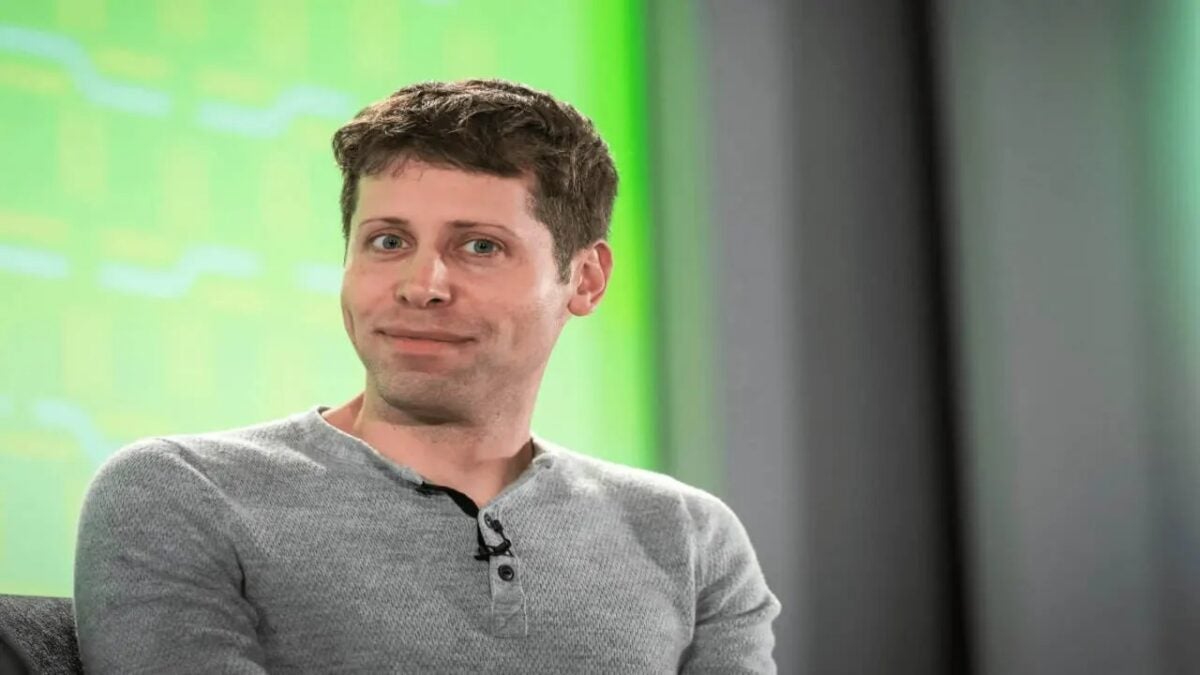News
Is AI really the future? Maybe, but not as CEOs expect
Although generative AI can be impressive, there is nothing to indicate that, as of today, it has any use or value that cannot be better performed by a human being.

- March 23, 2024
- Updated: July 1, 2025 at 11:52 PM

If we based ourselves on what we read in the press and social media, it seems as if AI is the future. There is nothing that AI is not capable of. The work of a musician, illustrator, filmmaker, or even that of a teacher, accountant, or, of course, journalist, is on the verge of extinction. And if we were to ask people who advocate for its use, they would tell us that it is natural. That we cannot stop the advance of technology. That’s how it should be.
Even if we ignore the fact that there is no such thing as an objective advancement of technology that we must accept, this poses obvious problems. But to consider them, we should first ask ourselves how this technology works.
Okay. How do AI work? Basically, they take the inputs given by a human being and create a replica of what they specialize in using those inputs to contrast them with the keywords in their database. If we tell an AI that generates images “woman”, “blonde”, and “blue eyes”, it will give us an image of a blonde woman with blue eyes. It searches its database for images that have the tags “woman”, “blonde”, and “blue eyes” and creates a blended image from a certain number of those images.
That’s what OpenAI does. That’s what ChatGPT does. That’s what all generative AI does. It takes our inputs and gives us the response we’re looking for. In the case of OpenAI, by combining many images; in the case of ChatGPT, by relying on a limited amount of text. But essentially, they do the same thing.
So far, so good. But this generates two problems. The first one, where do they extract those databases from?, and the second one, what purpose does it serve if there are already humans doing it?
The first of the questions is something that people involved in these questions have always avoided answering. Look at Murati, CTO of OpenAI, when asked about the sources of information for their AI, she stated that “I’m not sure about that“. And she responds in that way not out of stupidity, but for something much worse: she knows that she cannot confirm that the content used by her technology is not stolen.
The second of the questions is something they also don’t know how to answer, that’s why they do it with vagueness. Reid Hoffman, billionaire who has invested in the startup Inflection AI, states that AI “will be a co-pilot for all professions” and that it will help “extend creativity” and help students “create much more interesting papers”.
Of course, everything he says is vague. Absurd. A student has to write papers that demonstrate their knowledge on a subject and their ability to research it, not that they are interesting. AI is already being used in many creative professions, but not to generate new content, but to eliminate the most tedious parts of the work, such as removing background noise from an audio track or cropping an image. And creativity does not “expand” just because someone introduces terms to generate something: creativity expands by producing creative works.
Even if we were to accept that it is acceptable to replace humans with machines to do certain jobs, something that only seems to be willing to do by CEOs of big tech companies, we would still have another problem. AI tends to generate hallucinations.
AI hallucinations are the phenomenon in which technology perceives patterns that do not exist or, if we are extremely kind, are not perceptible by a human observer. This results in creating nonsensical works or, at least, ones that seem different from what has been requested. According to Sam Altman, CEO of OpenAI, this is not a problem because it can be solved. How? By investing trillions of dollars in rebuilding the chip business and AI, as well as finding an energy revolution that makes it possible.
These statements are not only vague, but they are also ridiculous. Any technology that requires changing the entire industrial landscape on a global level and an energy leap that is not only not on the horizon, but also may be impossible, can only be defined as ridiculous.
The biggest drama of AI is that it is based on vague statements. Adolescent fantasies of puerile, evil, stupid technocrats, or any combination of those three. Because, furthermore, there is something even worse than all this: AI has no known utility.
As we have already said, AI is perfect for replacing humans. Beyond that, it does nothing that a human being doesn’t do. In order to do so – theoretically, because even if Altman were right, there is no evidence that AI could do anything different from what it does now, but with fewer or no hallucinations – it would have to have something it cannot have: understanding of natural language. Creativity. Understanding. Consciousness.
That is to say, even if Altman were right and we found a way to generate the amount of energy and industrial reconstruction without literally depleting the planet’s resources and definitively destroying the climate, he wants to invest tens of trillions in creating a worse version of a human brain. Something that already exists and potentially does not require destroying the world like a comic book supervillain to be produced.
With this, it is easy to conclude that AI is useless. And no. It has uses. As we have already indicated, every now and then there are functions that make life easier for professionals of all kinds, saving them from doing tedious and very complex tasks for a human being. But that is not what Altman, Murati, Hoffman, or others like them are looking for. They seek to be able to replace every qualified worker with an unqualified one to whom they can pay a fraction of what they used to pay each of them. Nothing more.
Because that is the only thing generative AI is good for in the business field. It does a worse job than humans and to theoretically do it without aberrant failures, without even being able to do what humans do, two revolutions would be needed, one technological and one scientific, currently considered impossible. All of this according to its own promoters.
That’s why AI is the future. It has been for three decades. What is not the future is generative AI, unless something changes so radically that it will be by itself something that will go down in history books as one of the greatest discoveries of humanity. And if your invention requires cosmic miracles to happen first, it seems to us that, perhaps, it is not precisely the future of anything.
Cultural journalist and writer with a special interest in audiovisuals and everything that can be played. I'm not here to talk about my books, but you can always ask me about them if you're curious.
Latest from Álvaro Arbonés
- The most successful science fiction series by Matt Groening returns with a thirteenth season that recaptures the original essence of the show
- Super Mario turns 40 years old and although Nintendo celebrates it in its own way, fans have created a remaster worthy of him
- Netflix takes us by the hand of Jude Law and Jason Bateman to the New York underworld in this new psychological thriller
- Dexter has returned with a series that has taken both critics and audiences by storm and that you can now watch on streaming
You may also like
 News
NewsBorderlands 4 was not what players expected and Gearbox is trying to make it up to them
Read more
 News
NewsIdentity management as a key to protecting data in the cloud
Read more
 News
NewsCamp Rock 3 is already a reality, and it will bring together the Jonas brothers but will have a significant absence in its cast
Read more
 News
NewsJessica Chastain and Ben Stiller together as stars and producers in the new Apple TV+ series
Read more
 News
NewsThe Muppets will return next year in a special show with Sabrina Carpenter
Read more
 News
NewsThey suspend the Jimmy Kimmel show for his comments about Charlie Kirk
Read more